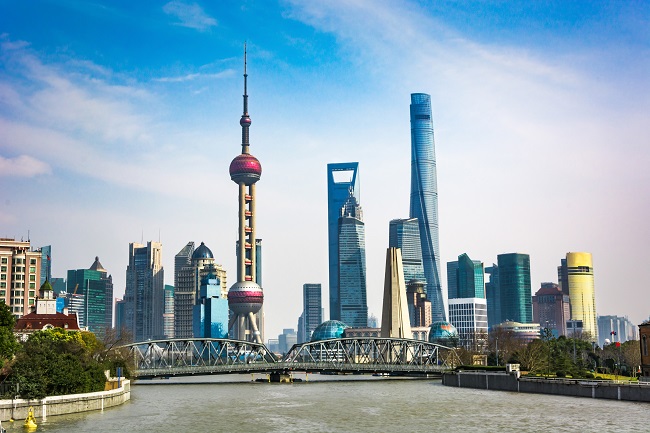China economic growth rate to 4.5% in 2022
Despite China’s strong rebound in core macroeconomic fundamentals in the first two months of 2022, a surge in COVID-19 cases, weak property market and rise in oil prices amid the Russia-Ukraine conflict dimmed the overall growth outlook for China. Against this backdrop, GlobalData, a leading data and analytics company, revised down 2022 GDP growth rate forecast for China from 5% in February 2022 to 4.5% in April 2022.
According to the National Bureau of Statistics, retail sales grew by 6.7% (Y-o-Y) and high-tech manufacturing sector grew by 14.4% (Y-o-Y) in the first two months of 2022 compared to previous year. In addition, consumer demand increased despite the recent geopolitical developments. The government has also increased spending on infra-projects, especially in electric and semiconductors sector.
However, strong rebound in economic growth might not sustain in the coming months due to major headwinds. The continued outbreak of new variants of COVID-19 has forced China to instate strict restrictions resulting in the shutdown of major manufacturing units and ports. The adoption of aggressive zero-COVID policy by the government will likely have a prolonged impact on the global supply chains thereby hindering the manufacturing output.
Gargi Rao, Economic Research Analyst at GlobalData, comments: “China being Ukraine’s major exporting destination, the conflict is likely to cast a shadow on Chinese businesses operating in Ukraine. Due to its strategic location, Ukraine is a major hub in China’s Belt and Road initiative. Also, free trade deal with Ukraine will allow China to access European markets. However, with the conflict, the future of all these investments and projects are in danger.”
Soaring coal and crude oil prices and input costs squeezing the overall profits of the firms have put inflationary pressures on the economy. In case of stable scenario, GlobalData projects that a 10% rise in annual oil prices to add 0.2-0.3 percentage points to inflation. Property and consumption demand weakness will likely keep inflations rates at 2.5% which is manageable. However, if discussions between Russia and Ukraine fail to hold then the widespread supply crunch and higher input costs are bound to raise inflation rates to 3.5% for 2022.
Meanwhile, China’s residential market is in chaos. The sales of commercial buildings in China contracted by 19.3% (Y-o-Y) during Jan-Feb 2022 with 25.3% (Y-o-Y) decline in eastern China, 9.4% decline in West and 8% decline in Central during the same period. The growth rate of investments in real estate has been slowing down and during Jan-Feb 2022 it grew by 3.7% on an annual basis, which is a sharp slowdown from the 38.3% growth recorded during the same period last year.
Rao continues: “According to GlobalData, hiring activity declined since early March 2022 amid the rapid rise in COVID-19 cases. China’s biggest tech companies are conducting large-scale layoffs this year as they deal with an economic slowdown and Beijing’s regulatory pressure. In addition, employment prospects for university graduates declined amid the dim economic outlook.”
Rao adds: “Industrial production activity picked up in first two months of 2022. However power outages and the lockdown of manufacturing hubs amid the spike in COVID-19 will take a toll on production. Supply constraints remained the major downside risk for investors and manufacturing giants.”
Stock markets took a hit since February-end amid pressures on multiple fronts, including COVID-19 lockdowns and built-up inflationary pressures due to Ukraine invasion. According to GlobalData, the Shanghai SE composite index witnessed a decline of 5.5% (Y-o-Y) in March 2022.
Rao concludes: “Lockdowns resulted in manufacturing units to shut down and consumer demand fell. Moreover, slowdown in European markets might also hamper China’s exports growth amid war uncertainty. The need of the hour is to set up policy support for capital markets and economy to reinstate investor confidence and push up consumer demand.”






















